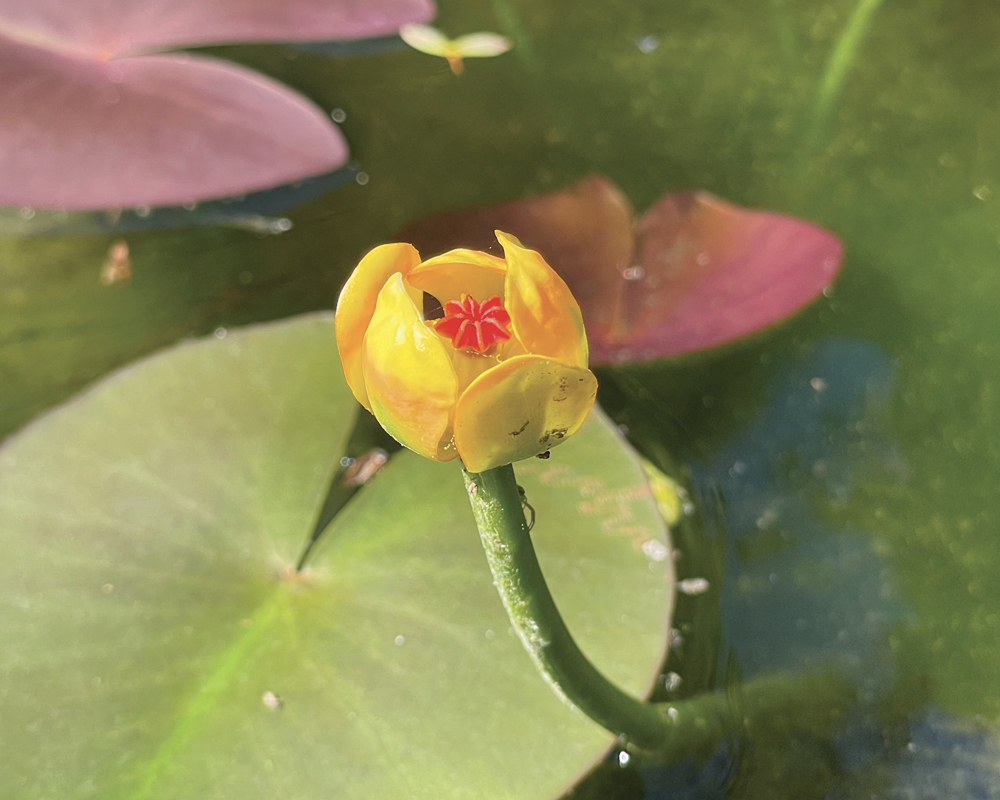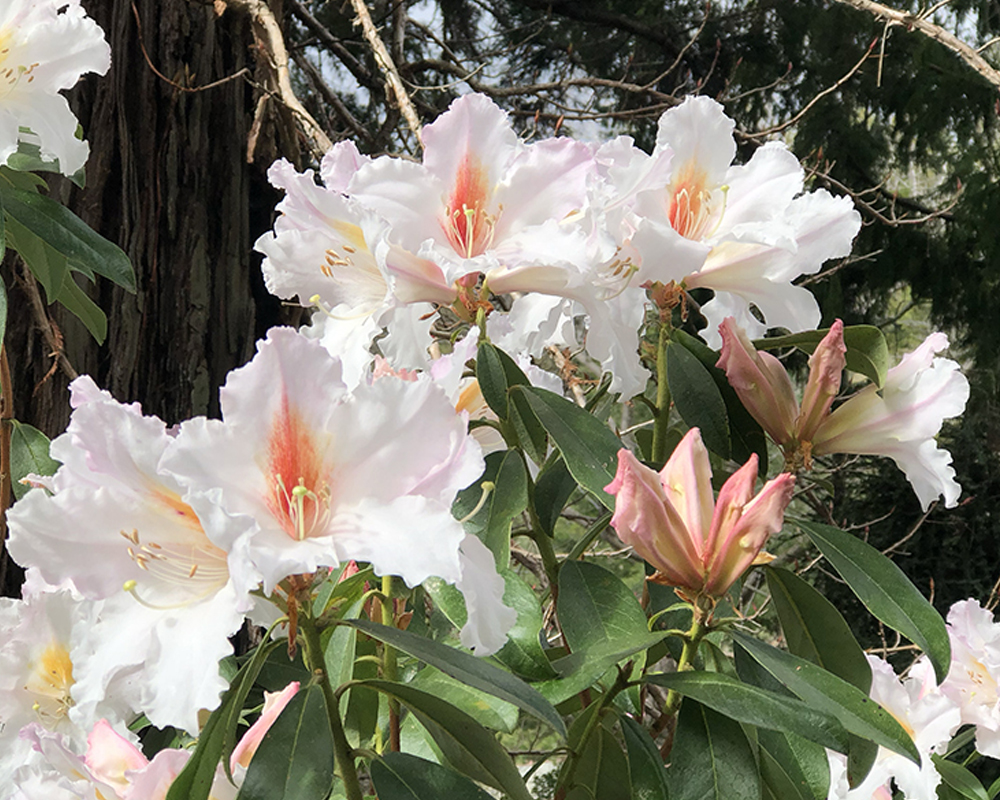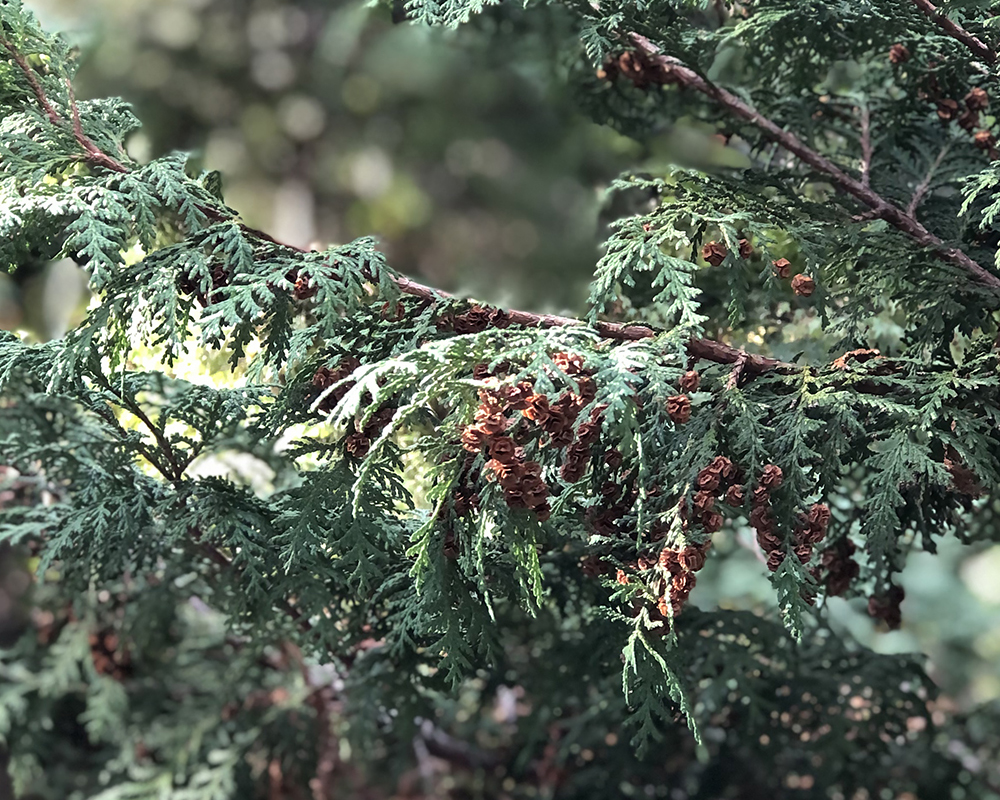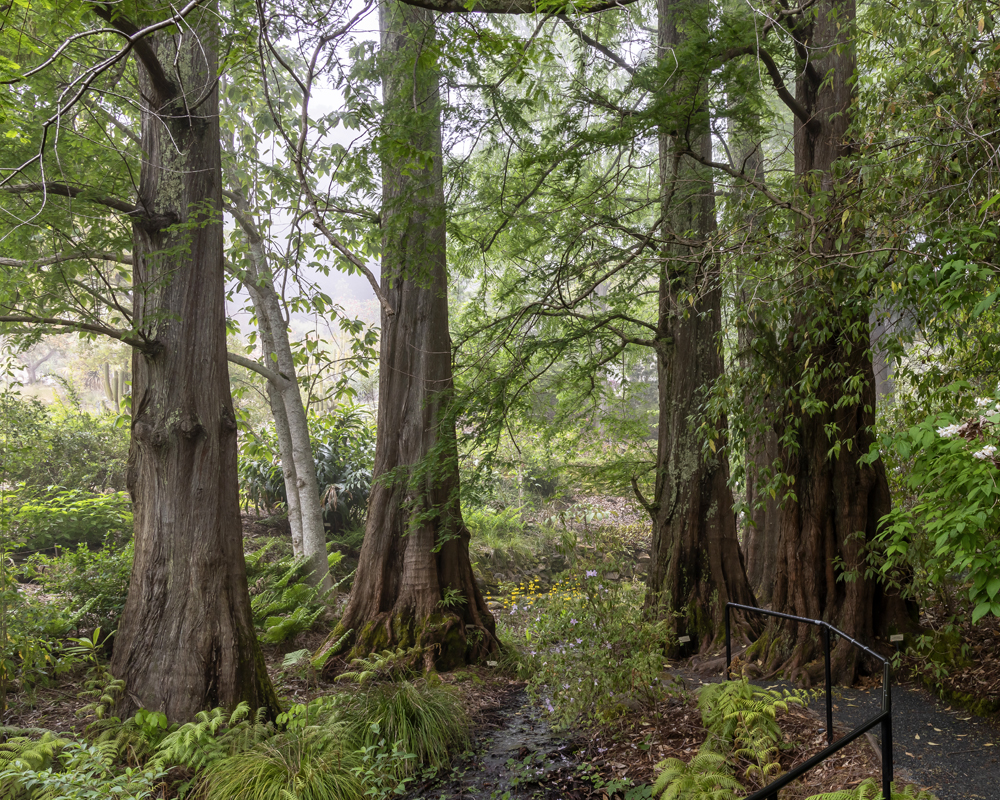
Asia
The Asian Collection truly is a garden for all seasons.
During Berkeley’s mild drizzly winters, the Camellia and Luculia species offer some splashes of vivid color, soon to be followed by a riot of Rhododendron blossoms. In the heat of the summer, this area provides a welcoming spot to rest in the shade of a towering conifer canopy. Autumn is always spectacular with its vibrant color display of the many deciduous species. No matter the time of year, there’s always something to please the senses in the Asia Collection.
Regions and History
The specimens of our Asian Collection represent the broad diversity found on the world’s largest continent. Temperate and subtropical species from regions such as India, Vietnam, Japan, and China grow along the hilly inclines banking Strawberry Creek. An incredible canopy tree collection—including conifers, maples, and magnolias—support an understory of woody shrubs and herbaceous plants.
The Asian Collection began in the 1930s when donors helped us to acquire a significant collection of Rhododendron species. That important legacy can still be seen today, nearly a century later. Another important addition occurred in 1949, when the dawn redwood (Metasequoia glyptostroboides), was added to the garden, laying the foundation for a diverse conifer overstory.
Collection Highlights
Today the collection continues to expand and currently includes nearly 2,000 accessions representing 140 plant families, most of which have documented wild origin. Some may be familiar to visitors, such as the hydrangeas, peonies, roses, and irises. Others are less commonly encountered, such as the giant turnip fern Angiopteris lygodiifolia.
The Japanese Pool
For more than 80 years, the Japanese Pool has delighted visitors with its waterfalls, lanterns, serene pool, and thriving population of native fauna. This iconic Garden destination is a peaceful spot to visit any time of year.
A breeding site for two species of native newts, California newt (Taricha torosa) and rough-skinned newt (Taricha granulosa), the pool provides an important habitat for these and other local species.
The nearby stone lantern at the foot of the waterfall is among the features that date from the 1939 Golden Gate International Exposition on Treasure Island. When the exposition closed, its Japanese exhibit was donated to the Garden on behalf of the Japanese government, with the aid of a donation from the UC Japanese Alumni Association. The exhibit was built of stone imported from Japan, including lanterns and a bridge. Kaneji Domoto, a prominent Bay Area landscape architect, had assisted in designing the exposition’s Japanese gardens. He also designed the Garden’s reinterpretation of the display and supervised Japanese workmen as they placed about 150 boulders to re-create the waterfalls and pool in 1941.
The pool was damaged in October 1962 when it rained 15 inches in just three days, causing boulders and lanterns to be swept away by a raging Strawberry Creek. Many of the original boulders were recovered, along with one original Yukimi-gata (snow-viewing) lantern, which still stands by the pool today. In 2023, due to extensive leaks, the pool was emptied, relined, and replanted with Asian aquatic plants such as yellow pond-lily (Nuphar pumila subsp. sinensis).
The Obata Gate
In 1998, the Obata Gate—a Japanese mountain-style gate at the entrance to the Japanese Pool—was donated to the Garden in honor of the well-known Japanese-American artist Chiura Obata and his wife, Haruko Obata. Obata was a respected UC Berkeley art professor and one of 113,000 Japanese Americans interned in detention camps following the bombing of Pearl Harbor. After more than a year of internment, he was finally released and returned to teaching at Berkeley.
Dawn Redwoods (Metasequoia glyptostroboides) located in the Asia Collection.
Banner image: Magnolia laevifolia




